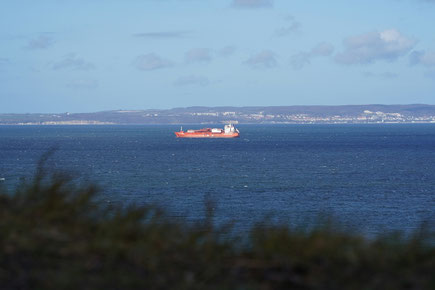Publications and reports
The Threat of Asteroid 2024 YR4 in Triggering the Kessler Syndrome

In December 2024, astronomers identified asteroid 2024 YR4, a near-Earth object with a trajectory that has since raised significant concerns. Initially flagged for a possible Earth impact in 2032, refined observations have ruled out a direct collision with our planet. However, the latest data from the James Webb Space Telescope and ground-based observatories indicate a 4.3 percent probability that this asteroid will strike the Moon on December 22, 2032. This risk, up from 3.8 percent in April 2025, could lead to a cascade of consequences for Earth's orbital environment, potentially initiating a catastrophic scenario known as Kessler Syndrome. While posing no direct threat to human life on Earth, the implications for satellite-dependent technologies and the future of space exploration are profound.
White Hydrogen Exploration: Game-Changer or Overhyped Promise?

The announcement of a 46-million-ton white hydrogen deposit in France’s Moselle region has taken the energy world by storm. Valued at $92 billion, this naturally occurring hydrogen discovery promises a carbon-free source of fuel and could potentially position France as a leader in global hydrogen markets. It has sparked conversations about the future of clean energy and whether white hydrogen could offer a viable alternative to traditional production methods. But is this truly the breakthrough we’ve been waiting for in the hydrogen economy, or does it fall short of addressing the scale of global needs? Let’s take a closer look: On the surface the scale of the 46 million tons discovery of white hydrogen sounds monumental. However, to put it into perspective, this is equivalent to about half of the world’s annual gray hydrogen production today, making it a notable but not transformative discovery in the context of global energy demands.
Assessment of EastMed hydrocarbon resources 2024

This assessment summarizes the 2024 discoveries and development of natural gas and other hydrocarbon resources in the Eastern Mediterranean (EastMed) region. The EastMed has been a hotspot for hydrocarbon discoveries since the late 1990s, transforming the region into a strategic arena for international cooperation and, at times, geopolitical tensions. These discoveries have spurred Israel and Egypt to launch large-scale offshore gas production projects in the Levant Basin, while Cyprus and Gaza territory, despite confirmed reserves within their economic zones, have yet to initiate extraction and monetization. Lebanon continues to explore for resources but has not yet confirmed any reserves despite promising prospects. Turkish efforts to drill near Cyprus, on behalf of Northern Cyprus, have so far been unsuccessful. Meanwhile, Syria’s offshore zones remain untapped due to the country’s prolonged security crisis.
Innovations in Rechargeable Battery Technologies 2024

This analysis is designed to provide corporate innovation managers and strategic decision-makers with actionable insights into emerging trends in rechargeable battery technologies. By identifying key advancements and market opportunities, it empowers stakeholders to navigate the evolving energy storage sector effectively and shape a sustainable, resilient energy future. Rechargeable batteries, based on secondary electrochemical cells, are reshaping industries with their versatility and transformative potential. These batteries are not only a cornerstone for portable electronic devices but are also playing a pivotal role in electric mobility solutions, grid energy storage systems, and a diverse range of industrial applications. Their growing adoption is fueling a rapidly expanding market, marking rechargeable batteries as a disruptive element poised to redefine the infrastructure of the future. The surge in demand for these technologies is driven by their ability to bridge the gap between renewable energy generation and reliable energy supply, ensuring sustainability and efficiency. From powering electric vehicles that reduce carbon emissions to stabilizing energy grids with renewable integration, rechargeable batteries are essential to addressing the pressing energy challenges of the modern world.
Maritime Trade Disruption in the Red Sea: Energy Market Implications, One Year Later

The Red Sea, a vital trade route handling around 10% of global energy commodities and 12% of maritime freight, has faced over a year of unprecedented disruptions due to regional conflicts. Attacks on vessels by Iranian-supported Houthi militants in Yemen, reportedly targeting over 100 ships in 2023 alone, have forced significant rerouting of vessels around the Cape of Good Hope. As a result, transit through the Red Sea fell by 56%, with container traffic dropping 73%, and LNG traffic down by an astounding 87%. This crisis has pushed freight rates up by 268% in early 2024, impacting energy prices and the broader economy as shipping costs remain significantly elevated. These developments highlight the global trade vulnerabilities, require strategic planning for major shipping players and depending countries and emphasize the urgent need for coordinated security measures.
Solar Irradiance Forecast for the Eastern Mediterranean in 2024

This report examines solar irradiance data from 2023 across the Eastern Mediterranean, offering a preliminary forecast for 2024. Analysis of ground-level solar irradiance trends reveals valuable insights into expected solar power generation capacity across the region. A close relationship between irradiance levels and solar output is apparent, highlighting the impact of weather patterns on solar energy availability. In 2023, the average daily solar irradiance at Israel's IMS Bet Dagan station located in the Coastal Plain reached 5,433 Wh/m²—5.8% higher than the multi-year average from 1965 to 2014. This anomaly exceeded the annual standard deviation of ±4.0%, indicating a notable increase in solar flux. Early 2024 data suggest that the trend will continue, with an estimated daily irradiance of 5,507±84 Wh/m², projecting another year of above-average solar potential in the Eastern Mediterranean.
Overview of the Israeli electricity market 2024

This report overviews the 2023-24 developments in the Israeli electricity market with emphasis on the power generation segment. The deployment progress in renewables continued to slow down, especially in the second half of the year and in early 2024 due to security crisis. In terms of conventional generation, the market mainly followed the implications of the Electricity Reform, continuing to transfer Natural Gas-powered generation from the Israel Electric Corp to the private segment and preparing to retire old coal units in the Hadera power plant. By the end of 2023, Israeli national electric generation capacity stood at 23.9 GWp, with private producers (IPPs) making up 53.3% of total grid-connected capacity and Israel Electric Corp (IEC) making up the remaining 46.7%. In terms of electricity generation in the Israeli market, 77.4 million kWh were produced in 2023, up from 76.9 million kWh in 2022. The 2023 generation segment was relying on a mix of fuels, dominated by natural gas and coal - both utilized by the Israel Electric Corp (IEC) as primary fuels. Secondary fuels of the IEC were diesel, oil fuel and methanol. Private power generation facilities were primary relying on natural gas, while diesel, oil fuel, kerogen and renewables were secondary energy sources. Notably, renewables reached the share of 11.5% of market supply in 2023 (close to LNRG's projected 12%) and are expected to reach 12.8% in 2024, primarily driven by solar PV generation.
Global solar PV operation and maintenance market 2024

This research estimates the size and trends of the global solar photovoltaic (PV) operation and maintenance (O&M) market as of 2024. The methodology for this work includes segmentation of the global market to multiple countries, with each country having a different ratio of residential, commercial, industrial and utility scale solar installations. The result of this study for 2024 - global solar photovoltaic (PV) market O&M size cap is 29.0 billion USD, composed of distributed (residential and commercial) 13.4 billion USD and centralized (large industrial and utility-scale) 15.6 billion USD segments. The estimate is that by 2025 the global solar PV O&M market would grow to a total of 36.3 billion USD, composed of 17.6 billion USD distributed and 18.7 billion USD centralized solar market segments.
Qatar's LNG Market Surge: A Strategic Advantage Amid Global Turmoil

Amidst geopolitical tensions in Ukraine, Israel, and the Iranian-sponsored Red Sea blockade, Qatar stands poised to capitalize on the surging demand for liquefied natural gas (LNG). QatarEnergy's recent signing of four agreements to charter 19 LNG carriers from Asian ship operators underscores the nation's strategic positioning in the global energy landscape. The agreements, announced by Qatar's Energy Minister Saad Al-Kaabi at a ceremony in Doha, signify a significant expansion of Qatar's LNG export capacity. China's CMES Co. Ltd. and Shandong MarineGroup Ltd. will each supply six vessels, while Malaysia's MISC Bhd will provide three. Additionally, a joint venture between Kawasaki Kisen Kaisha Ltd. and Hyundai Glovis Co. will contribute four LNG carriers. With each vessel boasting a capacity of 174,000 cubic meters, Qatar is gearing up to meet the escalating demand for LNG in key markets.
Unlocking Energy Innovation: The Power of Technological-Oriented Market Research

LNRG Technology is dedicated to driving energy innovation forward and revolutionizing the way we power the world. With the comprehensive suite of high-tier consulting services, LNRG offers industry-leading expertise in market research, technology scouting, R&D project management, system design and engineering, and techno-economic modeling for conventional and renewable electricity projects, with a special focus on solar photovoltaic (PV) technology. Market research is the cornerstone of informed decision-making and successful project execution in the dynamic energy landscape.





